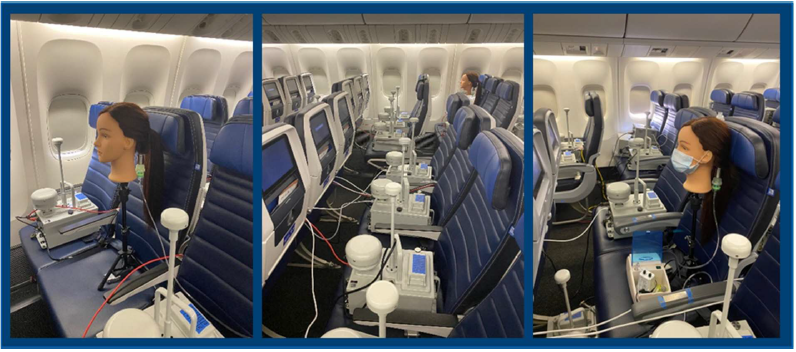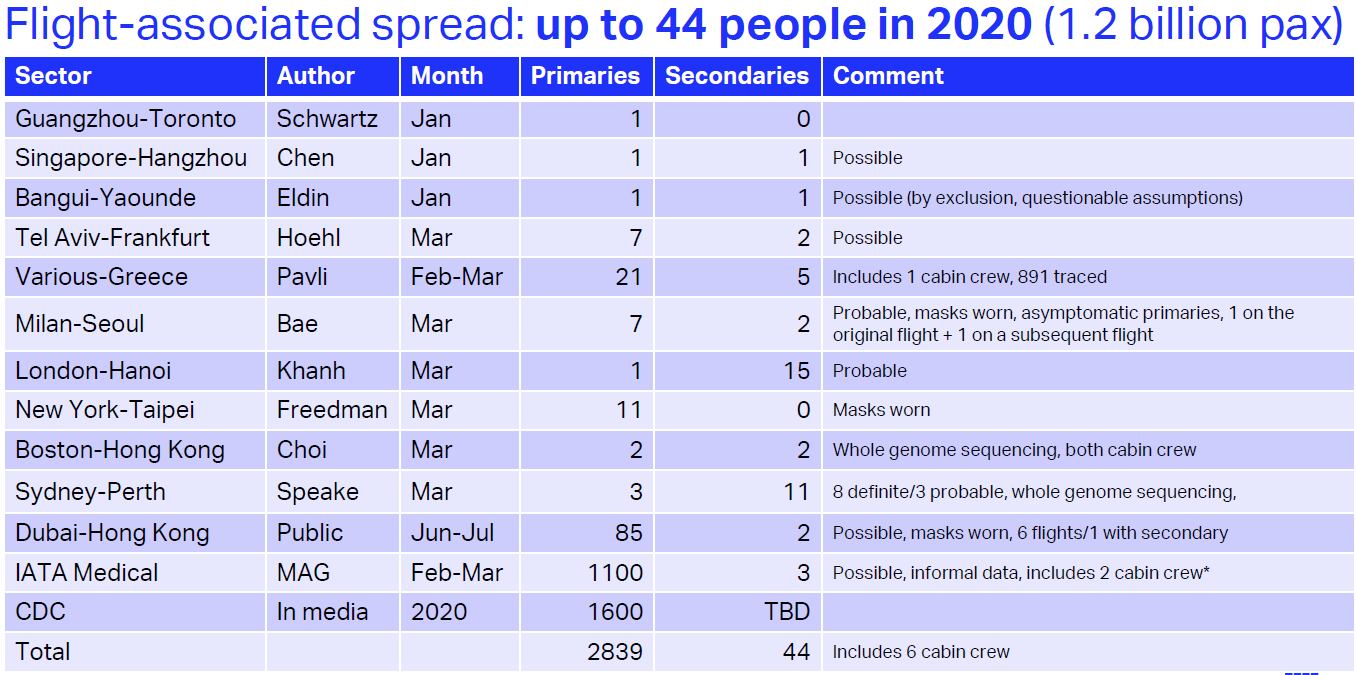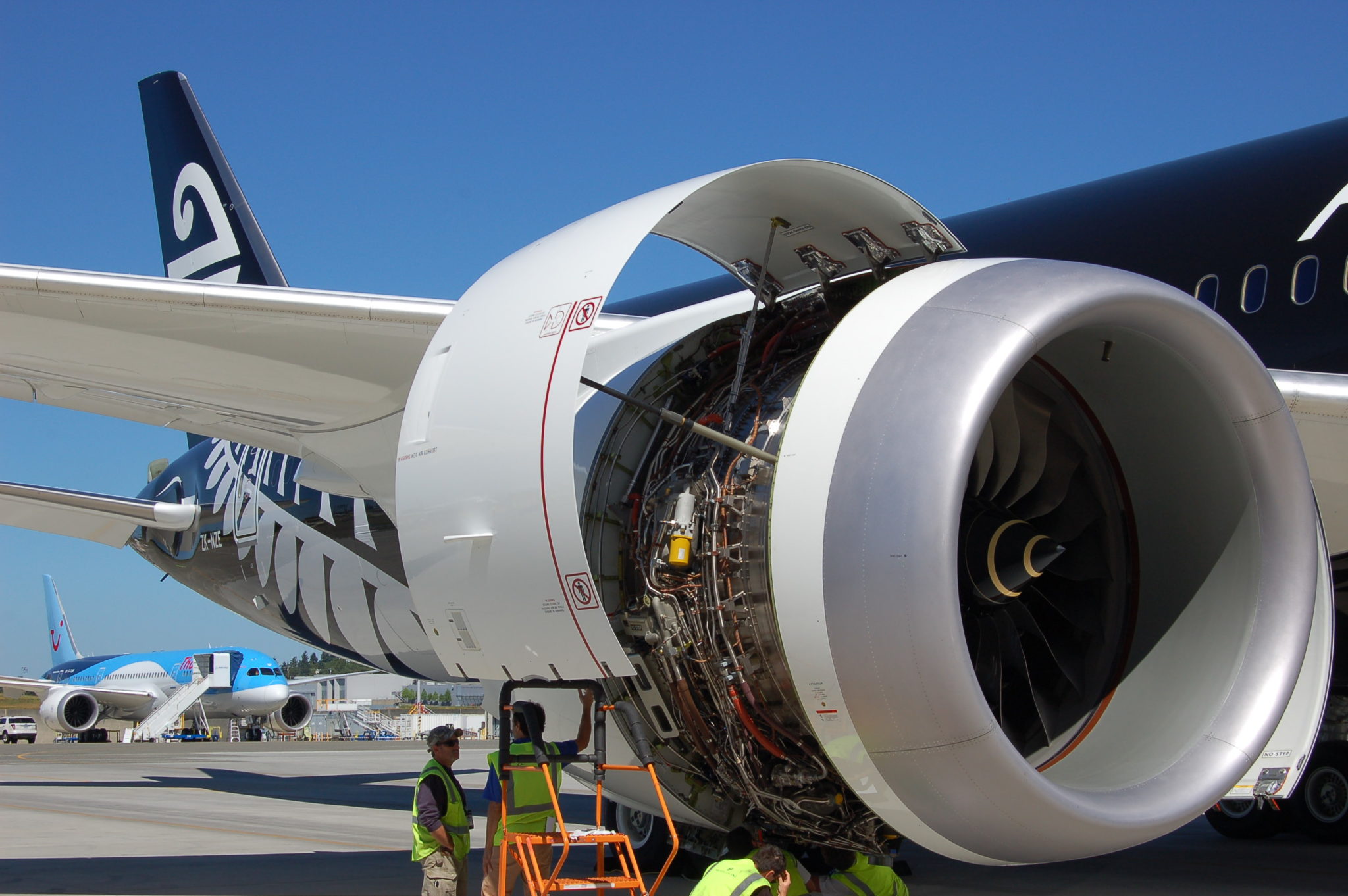Leeham News and Analysis
There's more to real news than a news release.
Bjorn’s Corner: Do I get COVID in airline cabins? Part 13. DOD tests confirm OEM results.
October 15, 2020, ©. Leeham News: Yesterday the USTRANSCOM and its US Air Force Air Mobility Command (AMC) published the results of extensive airliner COVID infection risk tests. The tests, which were made to check the risks for DOD personnel using commercial flights, were made on United 777-200 and 767-300 aircraft in cooperation with United.
The tests checked aerosol dispersion of the virus in the cabins for both simulated flights and real flights. The result was you need to sit next to an infectious person for 54 hours to inhale a viral load that could make you sick (worst case).
Covid in cabins: Low risk, no silver bullet
By Bryan Corliss
Oct. 14, 2020, © Leeham News: Covid-19 has made airlines, aerospace companies and suppliers really, really sick. IATA now says it could be 2024 before worldwide travel numbers get back to something near pre-Covid levels.
To get more paying flyers back in the air sooner, the industry is looking for ways to make passengers feel more assured that they won’t get infected while in the air. It’s leading to some innovative solutions and what some industry insiders say is the setting of long-overdue standards for in-flight cleanliness.
Boeing developed a system using UV-C radiation to sterilize cabin surfaces. One of Boeing’s best-known suppliers, Teague, designed new gaspers to inhibit the spread of airborne virus particles. And several other suppliers are pushing forward with products that inhibit the growth – and potentially kill – viruses and other microorganisms on high-touch cabin surfaces.
Aerospace suppliers say there’s not one silver bullet that’s going to prevent the spread of Covid-19 on jets.
“Buying our material doesn’t magically make your aircraft clean,” said Mathew Nicholls, the sales director for Tapis Corp., which provides virus-resistant fabric imbedded with silver ion strands for seat covers.”
“It’s the sum of all the parts,” he said in an interview for the current edition of Northwest Aerospace News magazine. “The HEPA filters, the airflow exchange. And now we’ve added this, this and this.”
Pontifications: Boeing’s latest forecast raises more doubt than hope
Oct. 12, 2020, © Leeham News: Every year, like clockwork, when Boeing publishes its 20-year Current Market Outlook, there is always another upward revision in forecast demand for new aircraft.
So, when the Chicago-based OEM admits that demand has taken a long-term hit, you know the situation must be dire.
Last week, Boeing belatedly published its annual CMO forecast for global commercial jet production and services. The forecast was quite a comedown as it marked a 2% fall from Boeing’s previous expectations for aircraft demand, with a whopping 10% drop for widebodies and freighters.
Airbus has withheld its 2020 Global Market Forecast while it continues to assess the impact of COVID-19. Read more
Bjorn’s Corner: Do I get COVID in airline cabins? Part 12. New results.
October 9, 2020, ©. Leeham News: We interrupt our series about hydrogen as an energy store for airliners to go back to our previous theme for a Friday or two: Do I get COVID in airline cabins?
IATA, Airbus, Boeing, and Embraer did a joint presentation yesterday about their latest knowledge about COVID and flying, and with the Pandemic entering the second wave in many countries it’s a timely subject.
Gov. Inslee misses the point in his pique over Boeing 787 production decision
By Scott Hamilton
Analysis
Oct. 5, 2020, © Leeham News: The contrast in tones couldn’t be sharper.
With the announcement last Thursday by Boeing it will consolidate 787 production from Everett into Charleston, local political leaders were disappointed but understanding and even sympathetic.
Snohomish County Executive Dave Somers and Everett Mayor Cassie Franklin likened Boeing to a family member who was in crisis. Hard decisions by Boeing were made, but in a crisis, you must. Support your family. Understand the situation. Figure out how to make the best of it to move forward.
On the other hand, Gov. Jay Inslee vowed to review the state’s relationship with Boeing and tax breaks granted to the company. Inslee claimed understanding but his tone was hostile, defiant and angry.
Related stories
Nobody should be surprised at Boeing decision
| By Scott Hamilton
Commentary Oct. 1, 2020, © Leeham News: Nobody, but nobody, should be surprised that Boeing is going to consolidate 787 production in Charleston (SC). This die was cast Oct. 28, 2009, when Boeing announced that the second 787 Final Assembly Line would be placed in Charleston instead of Everett. It was only a matter of time. 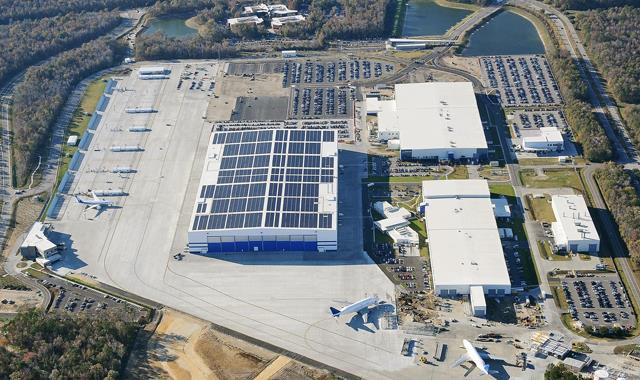 Boeing 787 production and assembly plants in Charleston (SC). Source: Flight Global. |
With 787 FAL closing and 747 production ending, what does Boeing do with massive space in Everett?
Subscription Required
By Scott Hamilton and Bryan Corliss
Introduction
Oct. 1, 2020, © Leeham News: Boeing is expected to announce as early as today that it will consolidate the 787 final assembly lines into one at its Charleston (SC) plant.
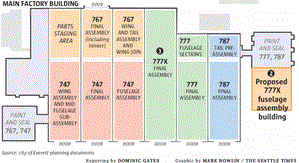
Footprint of Boeing Everett final assembly building. This map is somewhat outdated but a current one is not available. Source: Seattle Times.
Reuters reported last week the decision to consolidate production in Charleston was made. The Wall Street Journal Tuesday night also reported this decision, saying the decision could be announced this week.
The Everett (WA) line is expected to close as production of the 787 falls below seven a month. Boeing previously announced the rate will fall from a peak of 14/mo to 6/mo by 2022.
With the closure of the 747 line in Everett slated for 2022, this will open huge bays in Everett. Nearly half the world’s largest building by volume will be empty. Given lower production rates because of the COVID-19 pandemic, the 777 lines will be woefully underutilized.
Overhead costs probably can’t be absorbed by the remaining low-rate production 767/KC-46A and 777 lines. Boeing warned in its 2Q2020 10Q SEC filing that the 787 and 777 lines face a forward loss depending on production rates of other lines.
With no New Midmarket Airplane (NMA) being contemplated to fill the empty bays, what can Boeing do to utilize these massive spaces and retain profitability of Everett?
A radical solution is moving the 737 line from Renton to Everett. This means Renton would close well before the 2033 date LNA predicts and selling off the property for commercial development.
Related stories
HOTR: Rolls 787 engine orders tank last 5 year
By the Leeham News team
Sept. 29, 2020, © Leeham News: Engine orders for Rolls-Royce on the Boeing 787 tanked in the last five years—pre-COVID.
An analysis reveals that over this period, Boeing booked 952 orders for 787. Of these, 755 selected the GEnx. A mere 80 orders were placed with RR. There were 117 orders for which engines were not selected. This gives GE a 90% share of the selected campaigns.
It gets worse.
Of the 80 aircraft that went to Trent 1000, Boeing removed 44 under ASC 606 accounting rules as too shaky to consider firm orders anymore. These include Avianca, Latam, Norwegian Air Shuttle, etc., which either went into bankruptcy or are restructuring as a result of COVID.
Under this scenario, GE’s share is closer to 95% in last five years.
RR’s Trent 1000 on the 787 is a thorn in the company’s side because of serious technical issues that grounded up to 50 aircraft. Groundings began several years ago. RR continues to deal with the financial fall-out. Some customers switched from RR engines to GEnx in follow-on orders for the 787.
The engine manufacturers worst hit by the pandemic
Subscription Required
By Bjorn Fehrm
Introduction
September 28, 2020, © Leeham News: The worldwide COVID-19 pandemic is shaking the air travel and airliner manufacturing industries like no crisis before.
More than 9/11, the oil crisis of 1973 or 2005 or the financial crisis of 2008. The problems for the airlines and the airframe OEMs are on the front pages of the world’s media.
The part of the airliner industry that is not so visible but is perhaps hardest hit, is the engine industry. Its weird business model amplifies the effects of the crisis.
Summary
- Airframe OEMs lose money on the first hundreds of aircraft produced.
- When they announce “black numbers”, it means the per aircraft losses stop. It doesn’t mean the aircraft program is positive.
- For engine OEMs, it’s worse. They never reach ‘black numbers” on engine production. Their only money makers are old engine programs that fly a lot.
A lost decade for aircraft manufacturers, suppliers
Subscription Required
Now open to all Readers
Introduction
By Judson Rollins, Bjorn Fehrm & Scott Hamilton
Sept. 21, 2020, © Leeham News: Commercial aviation is facing a lost decade due to COVID.
Yes, most forecasts target 2024-2025 as returning to 2019 passenger traffic and aircraft production levels.
However, LNA in July published its own analysis indicating full recovery may not occur until 2028. Breathless headlines notwithstanding, it will take years for vaccines to be widely available and considered safe by enough of the world’s population. Growing concern about vaccine production and distribution capacity through 2024 underscores this view. Even Southwest Airlines CEO Gary Kelly said earlier this month that business travel might not fully return for a decade.
Indeed, the 2020s may well be a lost decade for aircraft manufacturers and their supply chains.
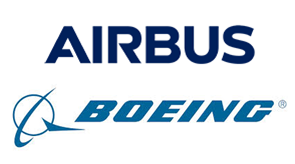 Summary
Summary
- Debt-laden airlines will have little money to order new airplanes
- Interest in re-engined 787, A350 likely nil this decade
- Airbus, Boeing, Embraer have little interest in launching new programs
- Engine makers too financially stretched to develop new designs
- Engineering talent, knowledge will be decimated by inevitable job reductions
- OEMs must “play the long game” at a short-term cost to safeguard their futures



